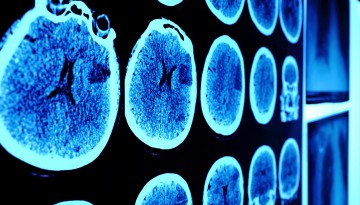Cornell Researchers Report Diversity Of Neurons Affects Memory
Neurons in a key area of the brain have different functions based on their exact genetic identity, and understanding this diversity could lead to better understanding of the brain’s computational flexibility and memory capacity, potentially informing disease treatment options, Cornell researchers report in a new study.
Pyramidal cells in the CA1 region of the hippocampus, once thought to be a uniform collection of neurons, have recently been found to be highly diverse. But the role of this diversity in cognitive functions had not been closely examined until now.
“Most memory studies assume the hippocampus and the cortex are like black boxes – monolithic structures, homogeneous sets of neurons,” said co-senior author Antonio Fernandez-Ruiz, assistant professor of neurobiology and behavior, and Nancy and Peter Meinig Family Investigator in the Life Sciences, in the College of Arts and Sciences (A&S). “So basically, you have two black boxes that talk to each other, but you don’t know exactly the components of these two boxes.”
“Hippocampo-Cortical Circuits for Selective Memory Encoding, Routing, and Replay” published May 16 in the journal Neuron. Co-senior author is Azahara Oliva, assistant professor of neurobiology and behavior (A&S).
What Fernandez-Ruiz and his team found, in testing on rats, was that CA1 neurons encode task-related information simultaneously, but then send impulses to different targets depending on whether the neurons are deep in the hippocampus or on the surface.
“We discovered that there are at least two different ways in which these structures talk to each other,” he said. “And there are specialized circuits integrated by different cell types that are coding different types of information, and sending them to different parts of the brain.”
For their study, using rats engaged in both memory tasks and sleep, the lab examined a large number of simultaneously recorded neurons, using high-density silicon probes. The probes detect the encoding activity of cells, coordinated by synchronous oscillations known as sharp-wave ripples.
As they found in previous studies, CA1 pyramidal cells (named for their shape) differed in some of their physiological properties depending on where they were located in the hippocampus (deep, middle or superficial). This diversity is key in memory development, Fernandez-Ruiz said.
A key discovery in this work: While deep CA1 pyramidal cells were the major contributors to sequence and assembly dynamics, superficial cells were specifically recruited during the replay of novel experiences, and drove memory formation.
“When you learn something new,” he said, “these aspects of experience can be segregated and encoded by specialized populations of neurons, then transmitted to different areas, which are specialized in processing different types of information. We believe this is important because this provides a system with more flexibility.”
The researchers also characterized a previously unknown circuit involving the hippocampus and cortex, which plays a role in memory consolidation. This increased understanding of the hippocampus’s neuronal diversity could help target areas affected by dementia, Oliva said.
“A disease like Alzheimer’s is characterized by impairments of this communication between the hippocampus and the cortex,” she said, “but we don’t know whether the whole structures are disrupted or, more likely, some specific neuron types in these structures are the more affected.
“If you could determine which aspect of memory is disrupted,” she said, “then maybe you could trace that back to the specialization of different cell types, and perhaps employ new, more targeted therapies.”
Co-authors include Ryan Harvey and Heath Robinson, postdoctoral researchers; and Can Liu, doctoral student in the field of neurobiology and behavior. All authors are members of the Brain Computation and Behavior Lab, co-led by Fernandez-Ruiz and Oliva.
Support for this research came from the National Institutes of Health, the Sloan Foundation, the Whitehall Foundation and a Klingenstein-Simons Fellowship.

